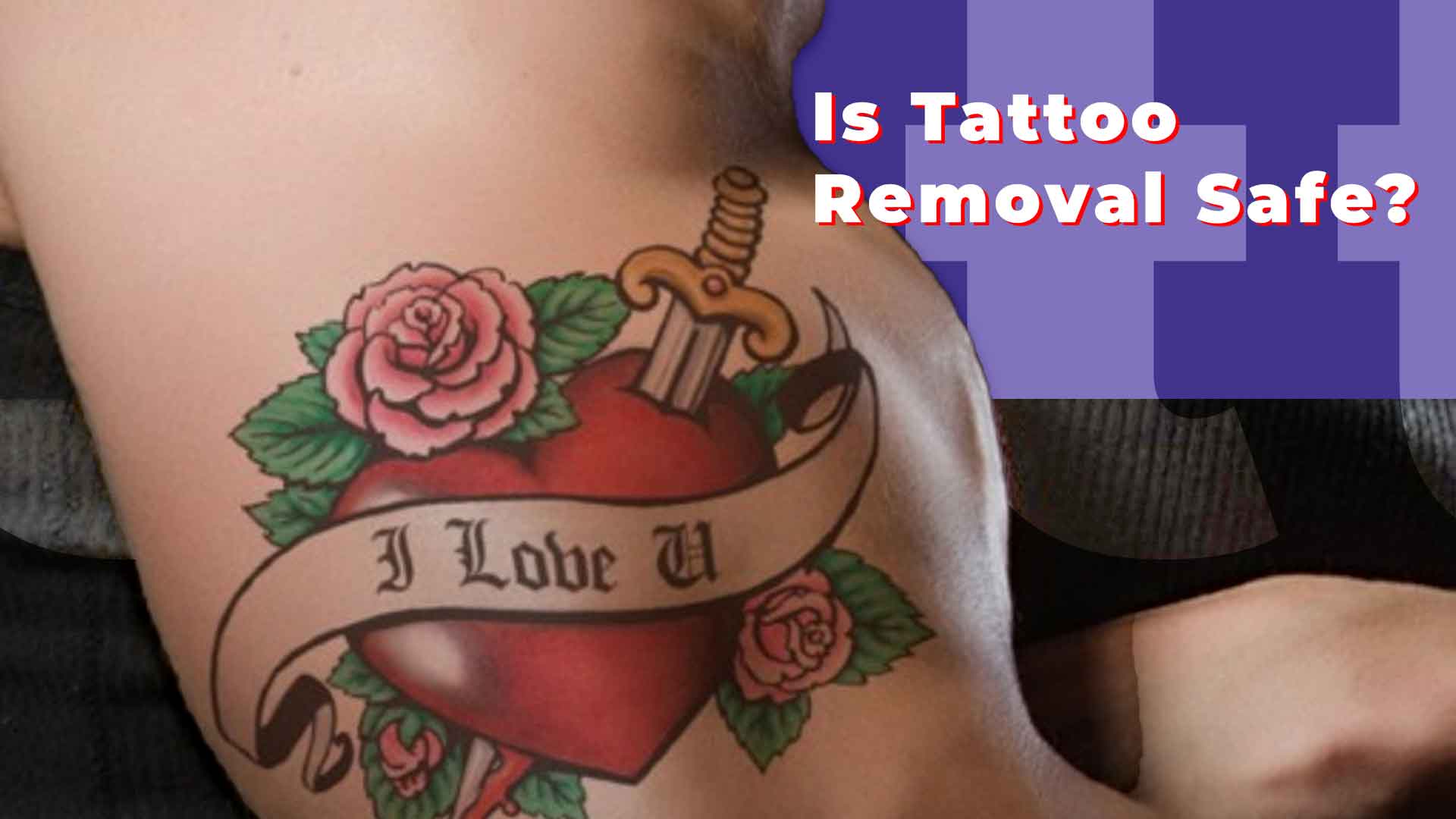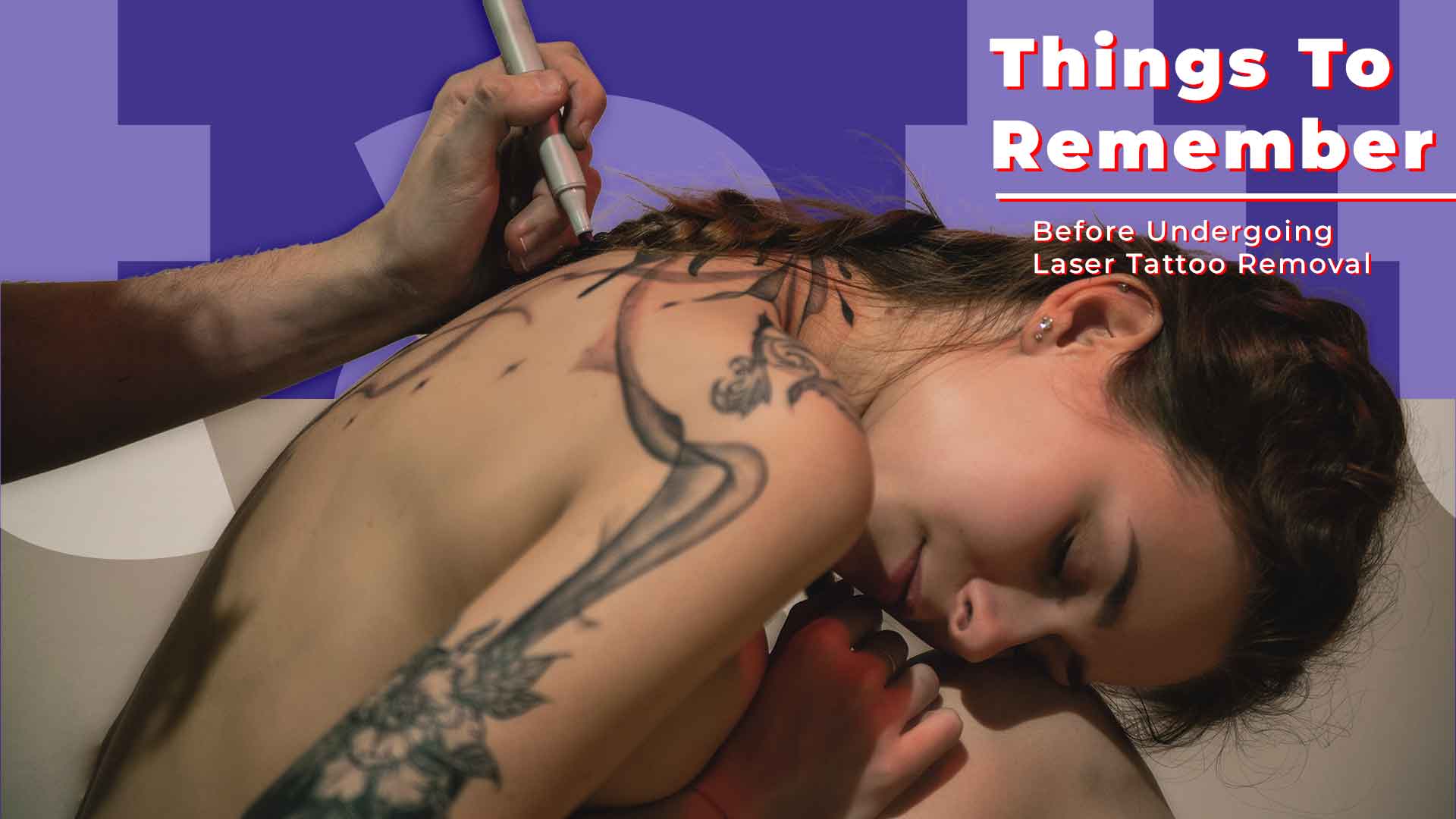Are you regretting your tattoo and considering removal? You are not alone. Tattoos have become increasingly popular in recent years, with nearly 45 million Americans admitting to having at least one. Unfortunately, a significant portion of these individuals regret their tattoos. But the advancement of laser removal technology now offers a solution to remove these unwanted tattoos without resorting to drastic measures.
From the cost to the potential side effects, this article provides everything you need to know about the tattoo removal process. It is often assumed that laser removal is excruciating, but there is a lack of information on the negative aspects of tattoos. This guide includes tips and information you need to know before going through the removal process.
How Does Tattoo Removal Work?
Laser tattoo removal is widely considered the most effective method of removing tattoos. It involves using a laser light to penetrate the skin and break up the ink particles, allowing the body’s immune system to clear the pigments over time. The laser used is harmless and only targets the pigmented skin, leaving the rest of the skin unaffected. The removal process is carried out in multiple sessions, based on the size of the affected area. The procedure uses Q-switched lasers, which generate short laser pulses at nanosecond rates, resulting in safe and effective removal with minimal scarring. This method is beneficial for removing dark or brightly colored pigments, which can be challenging with other removal methods, as it results in little to no residual hues or scars.
Is Tattoo Removal Safe?

Recent advancements in technology and medicine have made tattoo removal safer, but the procedure still carries some risks. The most common risks include skin infections, scarring, and changes in skin pigmentation. To minimize these side effects, it’s crucial to keep the treated area clean and covered, and to choose a reputable clinic and practitioner with experience in tattoo removal. Before starting the procedure, your practitioner should be informed of your medical history and any allergies to ensure that you don’t have any underlying conditions that might make the procedure more hazardous. Following these precautions can help ensure that your tattoo removal experience is as safe as possible.
Risk Reduction
After each laser tattoo removal session, proper aftercare is crucial to prevent side effects like skin infections, skin texture changes, and other undesired skin changes. Ask your healthcare provider for a recommended aftercare routine.
The laser tattoo removal procedure creates a surface skin wound; some people may experience bruises or swelling, while others may develop blisters, scabs, or crusts on the skin within 8-72 hours of treatment, which can last for a week or two. Below are some aftercare tips for laser tattoo removal:
- Apply a cold compress to reduce inflammation and discomfort.
- Avoid physical activity, hot showers, and saunas for 24 hours.
- Avoid direct sun exposure, pool water, salt water, and hot tubs for the next week or two.
- Immediate aftercare may include scabbing, itching, light bleeding, and blistering.
- Avoid shaving in the treated area until fully and visibly healed, which usually takes five to ten days.
- Avoid using bronzers or self-tanners for 4 to 6 weeks before treatment.
How Painful Is Tattoo Removal?

The level of pain experienced during a tattoo removal procedure is influenced by multiple factors, including your personal pain tolerance and the skill of the practitioner. It is advisable to have the procedure done by a licensed dermatologist, who can tailor the treatment to your comfort level and provide numbing solutions to reduce pain. Stress and negative emotions can amplify pain perception, whereas positive emotions tend to lower it. Some parts of the body are more sensitive than others due to uneven distribution of touch receptors, leading to more painful experiences in certain areas such as the fingertips, ribcage, forehead, ankles, wrists, and armpits.
Is Scarring a Risk with Laser Tattoo Removal?
Scarring is an uncommon side effect of laser tattoo removal when proper protocols and aftercare instructions are followed.
However, if the skin has existing irregularities, such as scarring, these are likely to remain after the treatment. Many people are unaware that scarring after laser tattoo removal is often a result of the initial tattooing process, rather than the removal itself.
Things To Remember Before Undergoing Laser Tattoo Removal

If you are considering laser tattoo removal, educating yourself on the basics is crucial before finding a specialist. Here are 12 important points to keep in mind before undergoing the procedure.
1. It’s a gradual process
Don’t expect to have a single session and wake up with your tattoo completely gone. Tattoos are meant to be permanent, and laser removal takes time and multiple treatments to achieve desired results.
2. Multiple sessions required
Getting rid of a tattoo requires multiple treatments; on average, 8-12 sessions are needed to see results. It typically takes a minimum of two and a half years for complete tattoo removal. It’s recommended to schedule laser treatments three months apart to maximize the results of each session and allow the body to fully heal before the next one. After six sessions, it is estimated that five more may be needed, though this may vary for each individual. The laser breaks down the tattoo’s pigment particles, which are then processed by the body’s immune system. The healing period between sessions is typically 8 weeks, during which the process repeats.
3. It’s expensive
Tattoo removal is costly, with a single session costing anywhere from $200-$1400, depending on the size and color of the tattoo. Expect to spend hundreds of dollars per session if you opt for a doctor to perform the procedure. According to the American Society for Aesthetic Plastic Surgery, the average cost per session is estimated at $463. However, remember that the cost of tattoo removal can vary depending on factors such as the size, color, and age of the tattoo.
4. Medical limitations
Certain medical conditions like pregnancy, breastfeeding, use of Accutane or antibiotics, or a history of keloids make you ineligible for laser removal.
5. Quality of service
Choose a reputable specialist with experience and good reviews rather than a facility based on cost. The success of laser removal depends on the expertise of the operator. To receive quality care, it’s important to locate a trustworthy dermatologist or reputable cosmetic surgery center that specializes in tattoo removal. If you need help finding a reputable provider, ask your primary healthcare provider for suggestions. Reputable clinics and centers follow established protocols for tattoo removal procedures.
6. Precision
Laser removal can target precise areas, making it possible to remove individual letters or fix mistakes in tattoos. It’s important to keep in mind that once the laser removes the line work and shading of a tattoo, the process is irreversible. If you’re considering tattoo removal, make sure you’re fully committed to the decision, as there is no going back to your original ink if you develop scars from the treatment. If you’re not confident in your decision and think you may want to keep your tattoo for nostalgic reasons in the future, you’ll need to get it redone.
7. Types of lasers
The Q-Switch Yag and Picosecond lasers are the only two types that can effectively remove tattoos. The Q-Switch Yag is the preferred laser for tattoo removal, capable of removing all colors except blue and green, which may be more challenging to remove. Picosecond technology is better suited for tattoos with heavy blues, greens, and purples.
8. Individual variations
The success of laser removal depends on various factors, such as the age of the tattoo, location, colors, and method of application.
9. Pain during procedure
Keep in mind that there may be some discomfort during the removal process. However, it is important to note that pain tolerance is subjective and varies from person to person. To help alleviate the pain, some removal specialists offer a numbing cream and use a device that uses cold air to keep their clients comfortable. If you’re concerned about pain, it’s a good idea to speak with your practitioner beforehand and ask about what measures they have in place to minimize discomfort.
10. Tattoo Aftercare
Before getting a tattoo removed, it’s important to prepare for aftercare. You’ll need items such as Aquaphor, bandages, and clothing that won’t come into contact with the tattoo. If you have tattoos on sensitive areas such as the ribs or feet, it’s advisable to plan your removal sessions accordingly and make necessary arrangements, such as purchasing suitable clothing or planning around wearing certain shoes.
11. Side Effects
It’s common to experience some temporary side effects while undergoing laser tattoo removal, including redness, swelling, tenderness, and in some cases, blistering, scabs, and hyperpigmentation. These side effects are more likely to occur in individuals with sensitive skin and when larger areas are being treated. They usually resolve within a few days, but it’s important to monitor them to ensure they don’t persist or worsen.
12. Try A Cover-Up Tattoo
Another option besides complete removal is to lighten the tattoo to allow for cover-up work. This semi-removal approach involves only lightening the ink to a point where a cover-up tattoo can be done.
Remember, laser tattoo removal offers a second chance to fix permanent skin markings, and it’s important to understand the process, limitations, and cost before getting started.
How Much Does Laser Tattoo Removal Cost?
The cost of laser tattoo removal varies based on the size of the tattoo, with larger tattoos requiring more time and resulting in higher costs. It may range from $480-$1,440 USD per session. Keep in mind that the cost is often a reflection of the quality of the service and that the procedure requires specialized equipment, so lower prices may indicate subpar equipment and result in substandard work.
Preparing For Your Appointment
To prepare for a tattoo removal appointment, you can take steps to reduce pain. Using a numbing cream is one option, as it can block pain signals by blocking sodium channels in nerves. It is best to talk to a dermatologist before using such a cream, which is available over the counter in various forms, such as creams, sprays, or liquids. Applying ice to the tattoo area can also help numb it and make the procedure less painful. Make sure to place a towel or washcloth between your skin and the ice to avoid skin irritation or redness.
After each appointment, it is important to take care of your skin. Multiple sessions are typically required for laser tattoo removal, and avoiding sun exposure as much as possible before, during, and after these sessions is crucial. Sun exposure before treatments weakens the skin and increases the risk of damage, making it harder for the lasers to remove the tattoo. To prevent skin damage, we recommend applying sunscreen before and after tattoo removal, and waiting 4 weeks after the removal before exposing the skin to excessive sun. Feeling relaxed and rested can also make the procedure more comfortable, and relaxation techniques, such as breathing exercises or listening to music, can help achieve this.
The Bottom Line

Tattoo removal can be a viable solution for those who want to get rid of their permanent ink. It’s a time-consuming and sometimes painful process, but when done correctly, it produces desirable outcomes. To minimize side effects, it’s important to follow a thorough aftercare regime and choose a reputable medical facility or clinic for the laser removal procedure.

